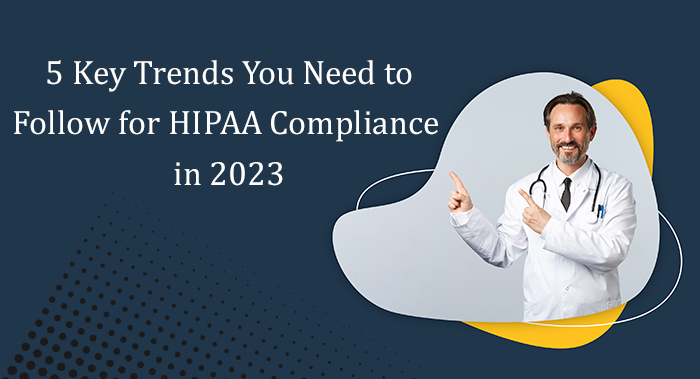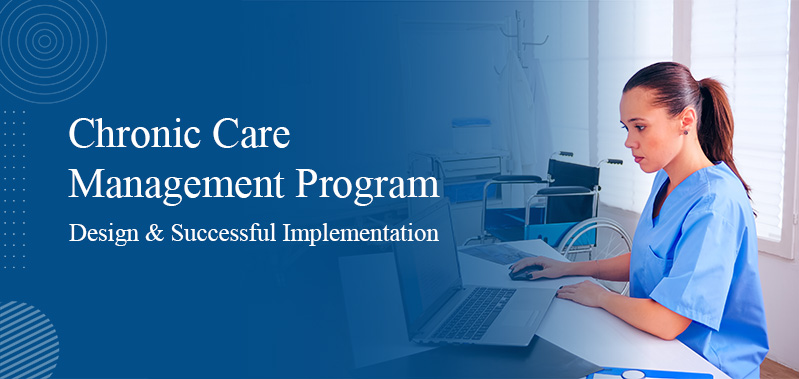
5 Key Trends You Need to Follow for HIPAA Compliance in 2023
The healthcare industry is always embracing new ways of working, such as the migration to digital and technological impact on the healthcare industry. It tends to the changing HIPAA compliance, and the new updates to the HIPAA Privacy Rule have been set to roll on in 2023. Indeed, there are many changes, but the changes are meant to be for the approach of compliance, not in the official rules.
Making a clear mindset to accept or adopt the HIPAA evolution is imperative. It’s the responsibility of patients and healthcare organizations to stay up-to-date with HIPAA compliance changes. To safeguard protected health information (PHI), healthcare organizations should follow the regulations of the law and continue building patients’ trust with proper consideration of the steps in mind.
Here, we have combined the top 5 trends to stay compliant with HIPAA. Let's begin!
1. Convergence of HIPAA Security and Privacy
The convergence of HIPAA Security and Privacy has become evident alongside the rise of Electronic Medical Records and other advancements in healthcare technology. These once distinct areas are now closely intertwined, with sensitive electronic protected health information (ePHI) requiring robust security measures, which in turn safeguard patient privacy.
Earlier, the HIPAA Privacy and Security Rule served separate purposes. While remnants of this distinction remain, it's becoming increasingly clear that these rules are becoming more intertwined. Consequently, healthcare leaders must perceive them as interconnected components of HIPAA compliance moving forward.
In 2023, patient rights regarding data access are undergoing precise definition, along with healthcare organizations' obligations to:
- Address requests promptly
- Verify the identity of individuals seeking PHI
- Appropriately manage data shared with third parties
For those who haven't already, reviewing the proposed updates is recommended. As the new year approaches, comprehensive awareness of these changes throughout your staff is essential for maintaining compliance. Implementing workforce training is crucial, ensuring every team member comprehends the updates; multiple training sessions might be beneficial.
2. Enhancing Workforce Awareness: Guarding Against Cyber Threats
Educating employees cannot be overstated in HIPAA compliance, especially in thwarting breaches. In a landscape where cyberattacks are increasingly sophisticated, vulnerability to threats like phishing is widespread. A notable statistic from 2021 revealed that 83% of organizations encountered phishing attacks, with a projected six billion more incidents anticipated this year.
To counteract the menace of phishing and similar threats, a comprehensive and recurring employee training regimen is indispensable, encompassing the following key aspects:
- Recognizing telltale signs of an impending attack
- Promptly reporting any detected incidents
- Adopting proactive measures to shield against potential threats
This training initiative should be embedded into your staff onboarding process and then reiterated regularly. Leveraging tools such as a Learning Management System (LMS) or a dedicated HIPAA Compliance solution can significantly bolster your workforce's preparedness.
3. Synergizing Cybersecurity Excellence with Section 405(d)
As the horizon of HIPAA evolves in the coming year, cybersecurity readiness assumes paramount significance. Beyond merely safeguarding data, an effective cybersecurity strategy is pivotal in forestalling detrimental breaches and data theft. However, enhancing your organization's security framework can be a formidable undertaking.
A collaborative effort 2017 among experts spanning IT, healthcare, cybersecurity, and privacy sectors resulted in a repository of free resources aimed at fortifying security practices and unraveling the intricacies of Section 405(d) within the 2015 Cybersecurity Act (CSA). This section, titled "Aligning the Health Care Industry Security Approaches," delineates pathways to bolster cybersecurity within the healthcare domain, leveraging established best practices and methodologies.
It is incumbent upon your team to internalize these best practices, with individual departments scrutinizing these standards. An official website provides access to templates, resources, news, and guidelines, facilitating a comprehensive grasp of security enhancement endeavors. As you understand security practices, remember to conduct periodic Security Risk Assessments (SRA). You can navigate this critical evaluation through a HIPAA compliance software solution, and engaging a 405(d) expert can ensure seamless integration of best practices into your SRA protocols.
4. Imperative of Remediation and Implementation
The Department of Justice (DOJ) underscores compliance can only be achieved with diligent remedial actions. Insufficient remediation and implementation heighten the risk of legal repercussions. Hence, a growing trend in 2023 involves embracing compliance automation software to streamline risk assessment procedures.
A pivotal advantage of automation lies in reducing time spent on risk assessment, and channeling resources toward effective remediation—a challenge universally faced by organizations. Partnering with the correct entity to navigate the shift to automation can alleviate the burden of autonomous implementation.
In tandem with transitioning to automation, smaller entities might grapple with instituting robust data handling procedures and security best practices. In this context, prioritizing, centralizing, creating templates, and tracking remedial efforts emerge as an urgent priority.
5. How Responding Strategically to an Incident
If a data breach or cyberattack afflicts your healthcare institution, it's important for you to resolve it quickly—collaboratively design and institute responsive reporting protocols for varying incident scenarios. Notably, the HHS maintains a repository of breaches investigated within the past 24 months, an essential resource underscoring the surge in cyberattacks and data breaches.
In the event of a security incident, adhere to industry-standard incident response procedures encompassing these pivotal stages:
- Preparation: Comprehensive cataloging of all IT assets, coupled with consistent monitoring to detect anomalies.
- Detection and Analysis: Aggregating data from programs to identify indicators of compromise, followed by thorough system status evaluation.
- Containment, Eradication, Recovery: Swift threat containment, leveraging security experts. Subsequently, eradication measures—password resets, malware removal, updates—usher in the recovery phase, restoring normal operations.
- Post-Incident Review: Upon recovery, scrutinize the incident for lessons, refining response plans and procedures.
Amidst this evolving landscape, proactive readiness and continuous learning remain paramount.
What More!
It’s paramount to understand the latest changes to the HIPAA rules, including cybersecurity best practices, workforce training, and more, to ensure HIPAA compliance for the upcoming years. There are many effective ways to stay on the HIPAA compliance path, such as workforce training, engaging with industry experts, automated reminders, etc.





